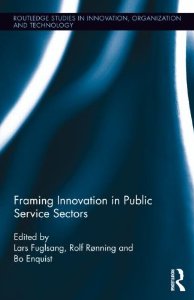A chapter on User-Driven Innovation and the Role of the Citizen has just been published by ISE-researcher Luise Li Langergaard in the anthology “Framing Innovation in Public Service Sectors”, printed by Routledge, New York. The chapter is called “User-Driven Innovation and the Role of the Citizen – A Citizen, a Customer, or a Human Being?”.
In the chapter, a case study of the Danish Ministry of Taxation in 2010 is presented, in which fourteen interviews was carried out with employees who had been involved in innovation projects in different ways.
Theory and practice
The focus of the case study is the concrete innovation practices in the Danish Ministry of Taxation:
“Theoretical accounts of broader strands of user-involvement … may not always reflect how ideas about users are implemented or interpreted in concrete practices. An interview study conducted at the Danish Ministry of Taxation suggests instead that such user-ideas take different forms and meaning when they are to guide and be incorporated into concrete innovation practices.”
It is also underlined however, that broader theoretical ideas can have influence on concrete innovation practices.
Break with old-fashioned authority role
During the study, a shift from seeing people on the other side of the counter as citizens to seeing them as customers is identified. One interview person in the study for example says that:
“The whole user aspect means that this is a relatively new way. Twenty years ago a proper bureaucrat didn’t give a shit. Back then one had proper petty officials. They didn’t give a damn about what those on the other side of the counter thought.”
Three different conceptions of the user – in this case of the Danish Ministry of Taxation – are then discovered: the citizen with an experience of due process, the customer, and the human being. These three conceptions then hold feelings and experiences of the person in the encounter with the organization as central. Common to the three conceptions is that they differ from traditional conceptions of citizenship, where citizens are defined by rights.
The anthology “Framing Innovation in Public Service Sectors” can for example be purchased here. For more information on the chapter, please contact Luise Li Langergaard at luiseli@ruc.dk.

